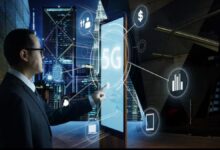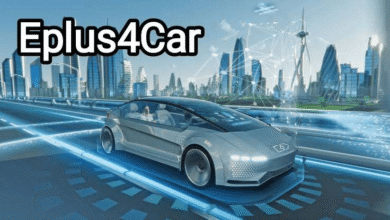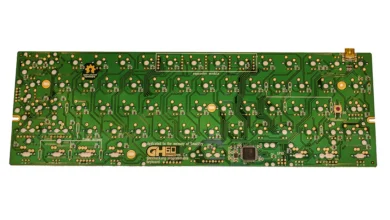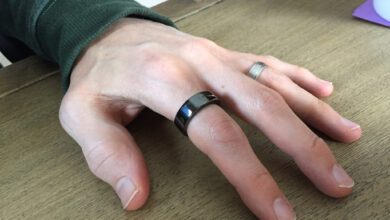Apple Teleport: Fact, Fiction, and the Future of Instant Presence
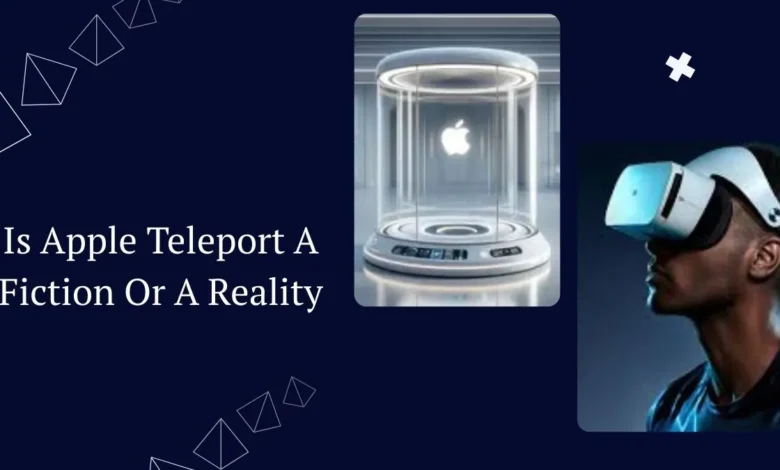
Introduction: What is Apple Teleport?
Apple Teleport: Imagine this: you wake up in Warsaw, but by lunchtime, you are walking through the streets of Tokyo—seeing the neon lights, breathing the city air—without boarding a plane. That is the dream of Apple Teleport, a term that has circulated in tech forums, AI-generated images, and speculative future forecasting. But what exactly is Apple Teleport, and is it anything more than wishful thinking?
At its core, Apple Teleport refers to a hypothetical technology associated with Apple Inc. (or inspired by the idea of Apple technology) that would enable instantaneous travel of people or presence—either physically (moving a person or object from one location to another in near-zero time) or virtually (making someone feel as though they are somewhere else via augmented or virtual reality). It blends ideas of teleportation from science fiction with the latest advances in augmented reality (AR), virtual reality (VR), holography, quantum physics, LiDAR mapping, and AI.
In this article, I will examine what Apple Teleport means under various interpretations, what theoretical or scientific basis (if any) supports it, what Apple’s current technology suggests, what the major challenges are, and whether this remains fiction or could become plausible. I’ll also include expert-style insights, tables, and image placeholders to help clarify. Let’s dive in.
The Origins of the Rumour: Why People Talk About Apple Teleport
Speculation, AI-Generated Media, and Viral Content
The idea of Apple Teleport has become widely discussed online, especially in recent years. Many of the claims emerge from social media posts, AI-generated images, and futuristic “concept” pieces that present visuals of teleport machines, portal chambers, or transportation pods—often attributed to Apple with no real confirmation.
These speculative media pieces tend to be convincing: sleek design, minimalist aesthetics, and polished visuals that fit what people expect from Apple. That sense of plausibility fuels belief.
Websites that examine “Apple teleport machine real or fake” consistently point out that most circulating material is not based on official Apple announcements. AI tools can generate realistic renderings of teleportation devices, but those remain concept art, not prototypes.
The Appeal: Tech, Sci-Fi, and Human Desire
Why does Apple Teleport capture so much imagination? Because teleportation represents ultimate freedom—the removal of distance, time, and inconvenience. In science fiction, teleportation symbolises connection across continents in an instant.
Apple has long been associated with pushing the boundaries of design, consumer technology, and user experience. Many imagine Apple could take science-fiction teleportation ideas and turn them into polished consumer products—if the science ever made them feasible. That hope is powerful, and it fuels rumour amplification: one image, one patent, or one speculative article can snowball into the widely shared belief that “Apple Teleport” is imminent.
Scientific Foundations: What Teleportation Really Means
To assess Apple Teleport seriously, we must first understand what teleportation means in science—and where the limits lie.
Quantum Teleportation vs. Physical Teleportation
Real scientific teleportation refers to quantum teleportation: the transfer of quantum information (state) from one particle to another, using entanglement, without moving the physical particle itself. This has been achieved in laboratories, but it does not transport mass, matter, or people.
Physical teleportation—the movement of an object, person, or macroscopic entity from one place to another by dematerializing and rematerializing or through some kind of portal—remains purely speculative. The energy requirements, data encoding, safety concerns, and ethical problems are astronomical.
Augmented Reality and Virtual Presence as “Teleport”
There is, however, another way to look at teleportation: virtual presence. Teleporting your senses, presence, or “self” through AR/VR, holography, remote viewing, and immersive video.
Apple’s work on ARKit, LiDAR sensors, Vision Pro, and mixed reality shows significant steps in this direction. One could imagine Apple Teleport being less about physically moving you, and more about virtually placing you somewhere else—seeing, hearing, and interacting as if you were there. This is far more feasible, though still technically challenging.
Apple’s Existing Technology: Foundations and Clues
Even though no credible source confirms Apple is building a teleportation device, Apple does possess technologies that could act as stepping stones.
Vision Pro, ARKit, LiDAR, and Spatial Computing
Apple’s Vision Pro headset, ARKit platform, and LiDAR sensors (in recent iPhones and iPads) allow digital and physical worlds to overlap. These technologies enable scanning, mapping of environments, and rendering of 3D content over real scenes.
They also allow remote visuals—for instance, spatial video or AR telepresence—that could simulate teleportation experiences. The ability to map depth, capture environmental lighting, and render convincing visuals is already mature. These could form the core of a “virtual teleport” experience.
Artificial Intelligence, Streaming Infrastructure, and Connectivity
Telepresence and remote communication have improved dramatically thanks to high-speed internet, edge computing, and AI for compression, image synthesis, and enhancement.
For “teleport” experiences, ultra-low latency, high bandwidth, and realistic rendering are critical. If Apple Teleport ever becomes real (even in a virtual sense), these technologies will be key.
Challenges: What Stands Between Us and Apple Teleport
Even in a purely virtual model, challenges abound.
Physics, Information, and Energy Barriers
To teleport physically, you’d need to scan, encode, transmit, and reassemble every atom of your body—or transfer your entire quantum state. That requires unimaginable energy and information processing. Current laws of physics make this nearly impossible.
Privacy, replication (do you destroy the original?), and questions of identity also complicate matters. Consciousness, continuity, and human biology aren’t fully understood yet.
Technical and Realism Issues
Even virtual presence faces problems: latency (delays) breaks immersion, resolution must be extremely high, and network coverage must be flawless. Capturing light, textures, motion, and depth in real time across devices is complex. Even minor mismatches can lead to sensory discomfort or the “uncanny valley.”
Safety, Ethics, and Legal Concerns
If Apple Teleport were more than virtual, safety would be paramount. Which laws apply across borders? If your environment is captured and transmitted, what about privacy? Who owns the data?
Psychological risks like disorientation or identity confusion, as well as economic inequality (only wealthy users benefiting), raise further concerns. Even energy use could pose environmental issues.
Cost and Scalability
Devices (VR/AR headsets, cameras, sensors), infrastructure (5G/6G, satellites, fibre), and servers all cost money. For global accessibility, a massive investment would be required. Apple or any company would need to balance cost against benefit.
Is Apple Teleport Real? Evaluating the Evidence
What We Know for Certain
- Apple has made no credible announcement about teleportation devices.
- Many AI-generated images and speculative articles refer to Apple Teleport, but none are based on verified Apple sources.
- Apple continues to invest in AR, VR, LiDAR, spatial computing, and AI—all relevant to a “virtual teleport” future.
What Might Be Possible Soon
- Virtual teleportation experiences (immersive presence for meetings, concerts, or events).
- Holographic or XR/AR projection for remote presence.
- “Teleport Mode” features in AR devices like Vision Pro, simulating presence elsewhere.
What Remains Unlikely Anytime Soon
- Physical teleportation of humans or macroscopic objects.
- Fully seamless teleportation without latency, distortion, or environmental mismatches.
- Affordable consumer devices that provide global teleportation experiences immediately.
Future Implications: What If Apple Teleport Becomes Real?
Business, Education, and Healthcare
- Business travel could drop as meetings shift to immersive telepresence.
- Teachers could “teleport” into classrooms; students could join labs or field trips virtually.
- Telemedicine could become more interactive, with remote surgeries or consultations enhanced.
Social, Cultural, and Environmental Impacts
- Families separated by distance could feel more connected.
- Cultural exchange could expand through virtual travel.
- Reduced travel might cut emissions, though it could also harm industries like tourism.
Ethical and Privacy Issues
- Who owns your digital presence?
- How do we protect environments from unauthorised capture?
- What are the psychological effects of living partly in teleport-like spaces?
Sceptical Outlook: Why Apple Teleport May Never Happen
- Physics constraints: Physical teleportation remains incompatible with our current science.
- User experience vs hype: Real-world glitches may make “teleportation” less magical than marketing suggests.
- Economic viability: High costs may deter adoption.
- Competition and regulation: Privacy laws and cross-border data rules could stall progress.
Roadmap: How Apple Teleport Could Evolve
- Short term: Advanced AR devices, better streaming, and possible “teleport mode.”
- Midterm: More immersive telepresence, holographic projection, 6G networks.
- Long term: Light-field displays, maybe quantum breakthroughs—but physical teleportation still speculative.
Quotes & Expert Opinions
“Teleportation, in its physical sense, remains a fantasy under our current understanding of physics. But virtual presence—making someone feel as though they are somewhere else—is an engineering challenge we can solve.”
“Apple’s strength lies in turning speculative ideas into consumer products. Apple Teleport, if it ever appears, will likely begin as a Vision Pro feature.”
Frequently Asked Questions (FAQs)
Q: Is Apple Teleport a real product by Apple?
A: No credible evidence suggests Apple has announced or released such a product. Most claims are speculative or AI-generated.
Q: Could Apple Teleport start as virtual reality or telepresence?
A: Yes. The most realistic near-term version is virtual presence using AR/VR/holography.
Q: When might Apple Teleport become available?
A: Virtual versions could appear within a few years. Physical teleportation remains decades away—if ever.
Q: What are the hardest technical barriers?
A: Atomic-level data encoding, energy demands, flawless real-time rendering, privacy, and infrastructure costs.
Q: Will Apple Teleport replace travel?
A: Probably not. It may complement travel, but physical presence will always matter.
Conclusion: Where We Stand
So, is Apple Teleport real? In the sense of physical teleportation—no. In the sense of immersive virtual presence—possibly, yes. Apple is building many of the foundations: AR, VR, spatial computing, and AI.
What to watch:
- Apple patents around holography, spatial presence, and telepresence.
- New Vision Pro features.
- Improvements in 5G/6G infrastructure.
- Evolving privacy and data laws.
Until then, Apple Teleport is an exciting idea—but for now, more dream than reality.

